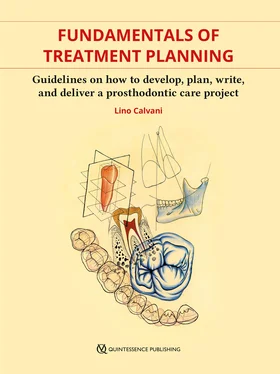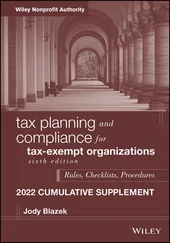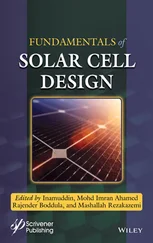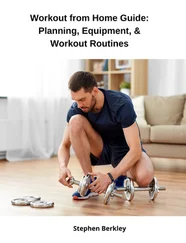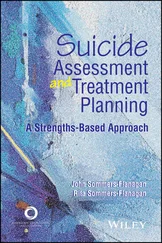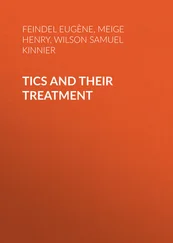
Fig 1-1 The birth and growth of medical examination, diagnosis, and treatment planning in western civilization. The first real scientific impulse occurred in 1500, with curiosity for the unknown and for medicine following until the end of 1700, when scientific evidence changed the schools and universities and gave birth to empirical knowledge and scientific research.
References
1.Garrison FH. An Introduction to the History of Medicine. Philadelphia: W.B. Saunders, 1921:508.
2.Heidel WA. Hippocratic Medicine: Its Spirit and Method. New York: Columbia University Press, 1941.
3.Crone HD. Paracelsus: the man who defied medicine: his real contribution to medicine and science. Melbourne: Albarello Press, 2004.
4.Major RH. A History of Medicine. Springfield: Charles C Thomas, 1954.
5.Nutton V. Ancient Medicine. Taylor & Francis, 2004.
6.Phillips ED. Greek Medicine. London: Thames and Hudson, 1973.
7.Temkin O. Galenism. Ithaca: Cornell University Press, 1973.
8.Klein R. Anatomy, Behavior, and Modern Human Origins. Journal of World Prehistory 1995;9:167–198.
9.Kording KP, Tenenbaum JB, Shadmehr R. The dynamics of memory as a consequence of optimal adaptation to a changing body. Nat Neurosci 2007;10:779–786.
10.O’Neal JC. Auenbrugger, Corvisart, and the perception of disease. Eighteenth Century Stud 1998;31:473–489.
11.Durant W. The Age of Faith: A History of Medieval Civilization – Christian, Islamic, and Judaic – From Constantine to Dante, A.D. 325–1300. MJF Books, 1993.
12.French R. Medicine before Science: The Business of Medicine from the Middle Ages to the Enlightenment. Cambridge University Press, 2003.
13.Grant E. A Source Book in Medieval Science. Harvard University Press, 1974:807.
14.Buck AH. The Growth of Medicine from the Earliest Times to about 1800. Yale University Press, 1917.
15.Prioreschi P. A History of Medicine, Volume 5: Medieval Medicine, ed 2. Lewiston, NY, USA: Edwin Mellen Press, 1996.
16.Johnson DA, Schaffer D. Learning from the Past – The History of Planning: Introduction. Journal of the American Planning Association 1985;51:131–135.
17.Loudon I. Western Medicine: An Illustrated History. Oxford University Press, 2001.
18.Adams FD. Physical Diagnosis, ed 14. Baltimore: Williams & Wilkins, 1958.
19.Gillis J. The history of the patient history since 1850. Bull Hist Med 2006;80:490–512.
20.DeGowin EL, DeGowin RL. Bedside Diagnostic Examination. New York: Macmillan, 1965.
21.McCallum JE. Military Medicine: From Ancient Times to the 21st Century. ABC-CLIO, 2008.
22.Porter R. The Cambridge Illustrated History of Medicine. Cambridge University Press, 2001.
23.Tallett F. War and Society in Early Modern Europe 1495–1715. Routledge, 1997.
24.Rutkow IM. History of Surgery in the United States, 1775–1900: Periodical and Pamphlet Literature. Norman Publishing, 1992:98.
25.Byrne D. Complexity theory and planning theory; a necessary encounter. Planning Theory 2003;2:171–178.
26.Walker HK. The origins of the history and physical examination. In: Walker HK, Hall WD, Hurst JW (eds). Clinical Methods: The History, Physical, and Laboratory Examinations, ed 3. Boston: Butterworths, 1990.
27.Ellis H. A History of Surgery. Cambridge University Press, 2001.
28.Rosling H. Why the world population won’t exceed 11 billion. TGS.ORG, 2016. YouTube lecture.
29.Haub C. How Many People Have Ever Lived on Earth? Population Reference Bureau (PRB), 2011.
30.Goodman ND, Tenenbaum JB, Feldman J, Griffiths TL. A rational analysis of a rule-based concept learning. Cogn Sci 2008;32:108–154.
31.Gopnik A, Tenenbaum JB. Bayesian Networks, Bayesian learning and cognitive development. Dev Sci 2007;10:281–287.
32.Jaynes J. The Origin of Consciousness in the Breakdown of the Bicameral Mind. Toronto: University of Toronto Press, 1976.
33.Tenenbaum JB. Griffiths TL, Kemp C. Theory-based Bayesian models of inductive learning and reasoning. Trends Cogn Sci 2006;10:309–318.
34.Zimmerman LM, Veith I. Great Ideas in the History of Surgery. Norman Publishing, 1993.
35.Heisenberg W. The Physical Principles of the Quantum Theory. New York: Dover, 1949.
36.Selin H (ed). Encyclopaedia of the History of Science, Technology, and Medicine in Non-Western Cultures. Springer, 2016.
37.Rosa H. Social acceleration: ethical and political consequences of a desynchronized high-speed society. Constellations, 2003;10:3–33.
38.Albuha AI-Mussawi RM, Farid F. Computer-based technologies in dentistry: types and applications. J Dent (Tehran) 2016;13:215–222.
39.Al-Thobity AM, Farooq I, Khan SQ. Effect of software facilitated teaching on final grades of dental students in a dental morphology course. Saud Med J 2017;38:192–195.
40.Lake BM, Salakhutdinov R, Tenenbaum JB. Human-level concept learning through probabilistic program induction. Science 2015;350:1332–1338.
41.Chang AC. How artificial intelligence will transform medicine. Lecture on: History of Artificial Intelligence, 2017.
42.Connell DJ. Planning and its Orientation to the Future. International Planning Studies 2009;14:85–98.
43.Goodacre CJ. Digital Learning Resources for Prosthodontic Education: The Perspectives of a Long-Term Dental Educator Regarding 4 Key Factors. J Prosthodont 2018;27:791–797.
44.Greene CC. How to educate millennials. J Calif Dent Assoc 2018;46:359–362.
45.Aerbersold M, Voepel-Lewis T, Cherara L, et al. Interactive Anatomy-Augmented Virtual Simulation Training. Clin Simul Nurs 2018;15:34–41.
46.Bacca J, Baldiris S, Fabregat R, Graf S, Kinshuk. Augmented reality trends in education: a systematic review of research and applications. Educ Tech Soc 2014;17:133–149.
47.Garg AX, Norman G, Sperotable L. How medical students learn spatial anatomy. Lancat 2001;357:363–364.
48.Hu J, Yu H, Shao J, Li Z, Wang J, Wang Y. Effects of Dental 3D Multimedia System on the performance of junior dental students in preclinical practice: a report from China. Adv Health Sci Educ Theory Pract 2009;14:123–133.
49.Huang TK, Yang CH, Hsieh YH, Wang JC, Hung CC. Augmented reality (AR) and virtual reality (VR) applied in dentistry. Kaohsiung J Med Sci 2018;34:243–248.
50.Kell HJ, Lubinsky D, Benbow CP, Steiger JH. Creativity and technical innovation: spatial ability’s unique role. Psychol Sci 2013;24:1831–1836.
51.Piromchai P, Avery A, Laopaiboon M, Kennedy G, O’Leary S. Virtual reality training for improving the skills needed for performing surgery of the ear, nose or throat. Cochrane Database Syst Rev 2015;(9):CD010198.
52.Radu I. Augmented reality in education; a meta-review and cross-media analysis. Pers Ubiquit Comput 2014;18:1533–1543.
53.Walsh CM, Sherlock ME, Ling SC, Carnahan H. Virtual reality simulation training for health professions trainees in gastrointestinal endoscopy. Cochrane Database Syst Rev 2012;6:CD008237.
54.Wright EF, Hendricson WD. Evaluation of a 3-D interactive tooth atlas by dental students in dental anatomy and endodontics courses. J Dent Educ 2010;74:110–122.
55.Allmendinger P. Planning Theory. New York: Palgrave, 2002.
56.Bergdaà M. Temporal Frameworks and Individual Cultural Activities: Four typical profiles. Time & Society, Sage, 2007;16:387–407.
57.EmTech Next. AI and robotics are changing the future of work. Are you ready? MIT Technology Review. Online publication, 2018. https://events.technologyreview.com/emtech/next/19/.
58.Reiser SJ. Medicine and the Reign of Technology. Cambridge, New York: Cambridge University Press, 1978.
Читать дальше
